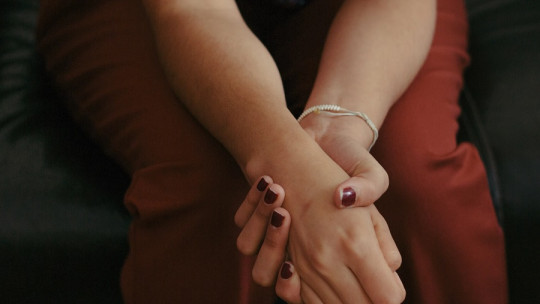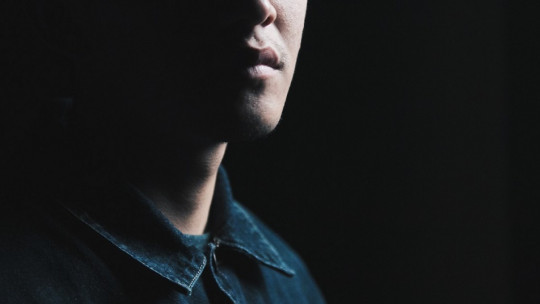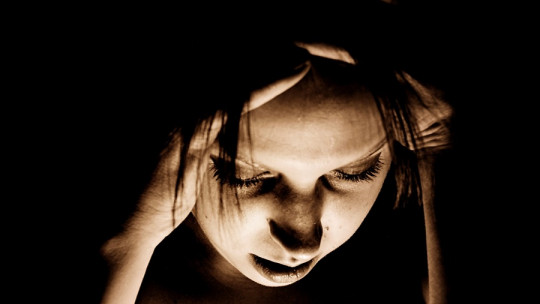
As children, the experience of having to visit the doctor or any other type of health specialist such as a dentist, for example, is quite distressing and traumatic. However, this is a normative and understandable fear, since in many cases these visits are related to suffering from some type of pain.
However, when this fear becomes chronic and becomes an extreme fear of doctors, we may not be faced with a case of latrophobia In this article we will talk about the characteristics of this disorder, as well as its symptoms, causes and treatment.
What is latrophobia?
Categorized within specific anxiety disorders, latrophobia consists of experiencing excessive, irrational, and uncontrollable fear of doctors This fear can extend to any type of professional who works in the health field (dentists, nurses…) or the health centers themselves.
Anyone with the ability to make a diagnosis, administer medication, give an injection, or perform any type of medical treatment or intervention can be the target of a latrophobic’s phobia. This anxiety disorder can go to the point of provoking a severe anxiety response just when perceiving the characteristic smell of a health center or hospital.
The main consequence of this phobia is that people who suffer from it They avoid at all costs having to go to any space related to the healthcare field
Although they are aware that any health professional aims to preserve it, people with latrophobia will try by all means possible not to go to a medical visit with the risk of overlooking diagnoses, aggravating diseases, or even that they become incurable.
Although in the specific anxiety disorder known as nosophobia the patient also avoids having to go to a doctor’s office at all costs, the main difference found with latrophobia is that, while in the former the phobic stimulus is manifested by the fear of getting sick, in the second It is the figure of the professional that causes this fear
How to differentiate it from a normative fear of the doctor?
As we mentioned previously, it is common to feel a certain degree of respect, or even some fear, at the idea of going to the doctor’s office, dentist, etc. However, this fear does not have to be excessive or interfere with the patient’s routine.
There are a series of specific characteristics that allow us to differentiate a normative fear from a phobic fear typical of phobic disorders such as latrophobia.
The first trait with which we can identify a phobic fear is that this it is experienced in an absolutely disproportionate way compared to the actual threat that exists. Although it is true that sometimes visits to the doctor can involve painful measures, the level of fear that these people experience when faced with the possibility of suffering from said pain is excessive and exaggerated.
The second characteristic of this type of specific phobias is that fear is experienced in a completely irrational way. That is, the person is practically incapable of providing a reasoning or logical basis for the fear he is experiencing and even reaching the point of accepting that it does not make any sense, and still not being able to avoid it.
Finally, in this type of anxiety disorders, the person cannot control the fear they experience at the appearance or the mere idea of having to face the phobic object. This means that the patient cannot help but experience the sensations and feelings of anxiety as well as the appearance of intrusive thoughts and beliefs that favor and enhance this anxiety response.
What symptoms does it present?
The most characteristic manifestation of latrophobia, as well as the rest of specific phobias, is the experience of high levels of anxiety when the feared object appears. Furthermore, for this fear to be diagnosed as phobic, the person must manifest some of the symptoms of this type of disorder.
These symptoms They are divided into physical symptoms, cognitive symptoms and behavioral symptoms And although they do not have to arise in the same way and with the same intensity in all people, it will be necessary for you to experience signs of all three categories.
1. Physical symptoms
In the same way as occurs with the vast majority of responses related to anxiety, experiencing a phobic fear usually involves a series of changes and alterations in the body. These changes appear due to the hyperactivity that the autonomic nervous system manifests when the aversive stimulus appears.
These symptoms include:
2. Cognitive symptoms
Accompanying the physical symptoms, latrophobia presents within its clinical picture the appearance of a series of irrational thoughts and distorted beliefs about the feared object. In this case, medical personnel or health professionals.
These cognitive symptoms manifest themselves as follows:
3. Behavioral symptoms
This last category of symptoms includes those behavioral patterns that appear in response to the appearance of the phobic stimulus. This symptomatology aims to avoid the feared situation or escape from it if it has already appeared. These behaviors are known as avoidance or escape behaviors.
The first type of behavioral symptoms are those that aim to avoid meeting a health professional. That is, it includes all those behaviors or acts that the person performs to avoid the possibility of facing them. Thanks to these symptoms the person temporarily avoids experiencing feelings of anguish and anxiety typical of a phobia.
On the other hand, escape behaviors appear when the person with latrophobia has not been able to avoid the phobic stimulus, so they will carry out all acts and behaviors that allow them to escape from the situation as quickly as possible.
What are the causes?
Although it is really difficult to determine the specific origin of a phobia, it is hypothesized that a genetic predisposition, linked to the experimentation of traumatic experiences can be the basis for the development of this and any other phobia.
In the same way, there are many other factors that we must take into account, such as personality, cognitive styles or vicarious learning, since they can favor the appearance and development of this type of irrational fears.
Is there a treatment?
Due to the complications for the patient’s health that this phobia can cause, it is recommended that these people go to a mental health professional. There are different psychological interventions that can help reduce the intensity of symptoms until they even disappear.
Treatments that use cognitive restructuring techniques They can help eliminate irrational thoughts and beliefs, which often form the basis of this disorder.
Likewise, the treatment known as “systematic desensitization,” in which the person is gradually mentally exposed to the thoughts or situations that cause this fear, accompanied by training in relaxation techniques, is highly effective in The person can overcome their phobic fear and restore their usual rhythm of life.








